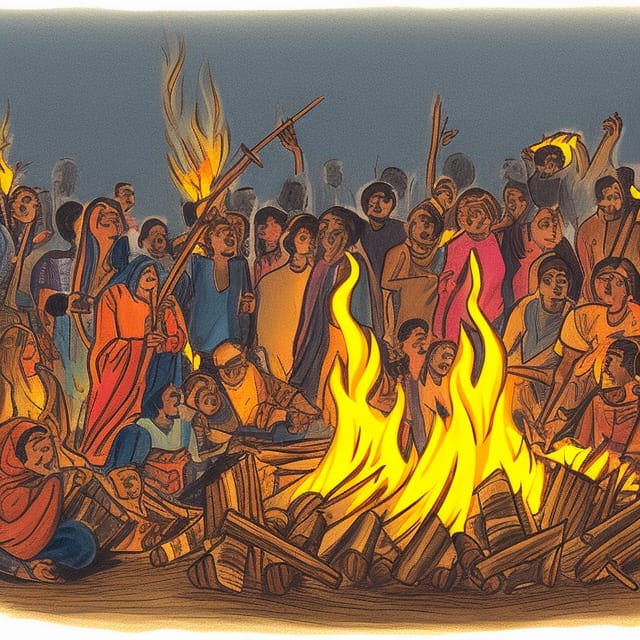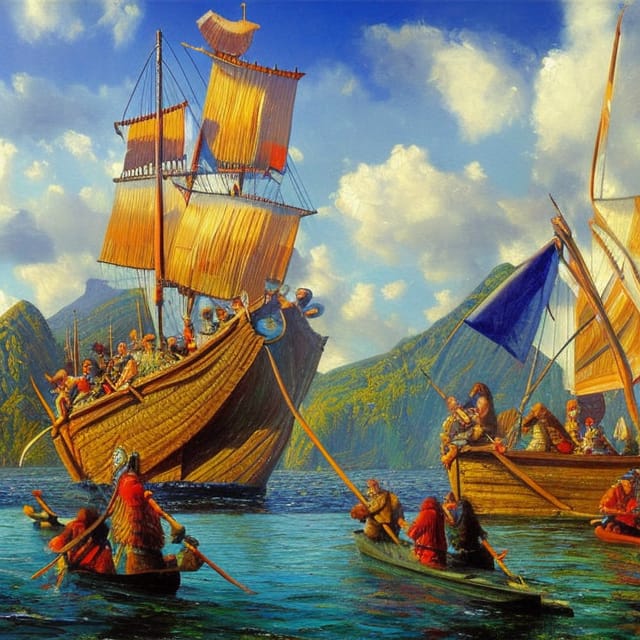The Vikings, renowned for their seafaring prowess and warrior culture, possessed a deep reverence for their departed. Viking burial customs and rituals were elaborate, honoring the deceased and providing them with provisions for their journey to the afterlife. In this blog post, we will delve into the fascinating world of Viking burial customs, exploring the rituals, artifacts, and beliefs associated with this sacred practice.

-
Ship Burials: The Final Voyage
- The concept of ship burials: Sending the deceased on a symbolic final journey by placing them in a ship.
- Significance of ships: Symbolizing the Viking connection to the sea, exploration, and the afterlife.
- Archaeological discoveries: Famous ship burials, such as the Oseberg and Gokstad burials, and their rich findings.
-
Grave Goods: Preparing for the Afterlife
- Belief in an afterlife: Vikings equipped the deceased with grave goods to ensure their comfort and status.
- Valuable offerings: Weapons, jewelry, household items, and even animals were buried with the deceased.
- Symbolic meanings: The provision of items for protection, sustenance, and continuation of social status.

-
Funeral Pyres and Mound Burials
- Funeral pyres: The ritualistic burning of the deceased on a pyre, signifying a spiritual passage.
- Mound burials: Creating burial mounds or barrows as memorials and markers of the deceased's resting place.
- The importance of location: Selection of prominent sites, such as hillsides, cliffs, or near water, for burial mounds.
-
Rituals and Ceremonies
- Commemorative feasts: Gatherings to honor and remember the deceased, accompanied by food, drink, and storytelling.
- Animal sacrifices: Offerings made to ensure the deceased's safe passage to the afterlife.
- Religious invocations: Rituals involving priests or shamans, reciting prayers and invoking the gods for protection and guidance.
-
Burial Monuments: Stone Memorials and Runestones
- Stone monuments: Erecting large stones or menhirs to commemorate the deceased and mark their burial sites.
- Runestones: Inscriptions carved on stones, providing information about the deceased and their accomplishments.
- Symbolic imagery: Depicting scenes from mythology, battles, or personal achievements.
Viking burial customs and rituals offer a glimpse into the rich spiritual and cultural practices of the Norsemen. Through ship burials, grave goods, funeral pyres, and stone monuments, the Vikings expressed their beliefs in the afterlife and paid homage to their departed kin. These customs not only provided a dignified farewell but also reflected the Viking's deep connection to the natural world and their enduring legacy.
Works Cited:
- Brink, Stefan. Viking Burial Customs. Tempus, 2008.
- Davidson, Hilda Ellis. The Road to Hel: A Study of the Conception of the Dead in Old Norse Literature. Cambridge University Press, 1993.
- Jesch, Judith. Ships and Men in the Late Viking Age: The Vocabulary of Runic Inscriptions and Skaldic Verse. Boydell Press, 2001.
- Price, Neil. The Viking Way: Religion and War in Late Iron Age Scandinavia. Oxford University Press, 2003.





Leave a comment
This site is protected by hCaptcha and the hCaptcha Privacy Policy and Terms of Service apply.